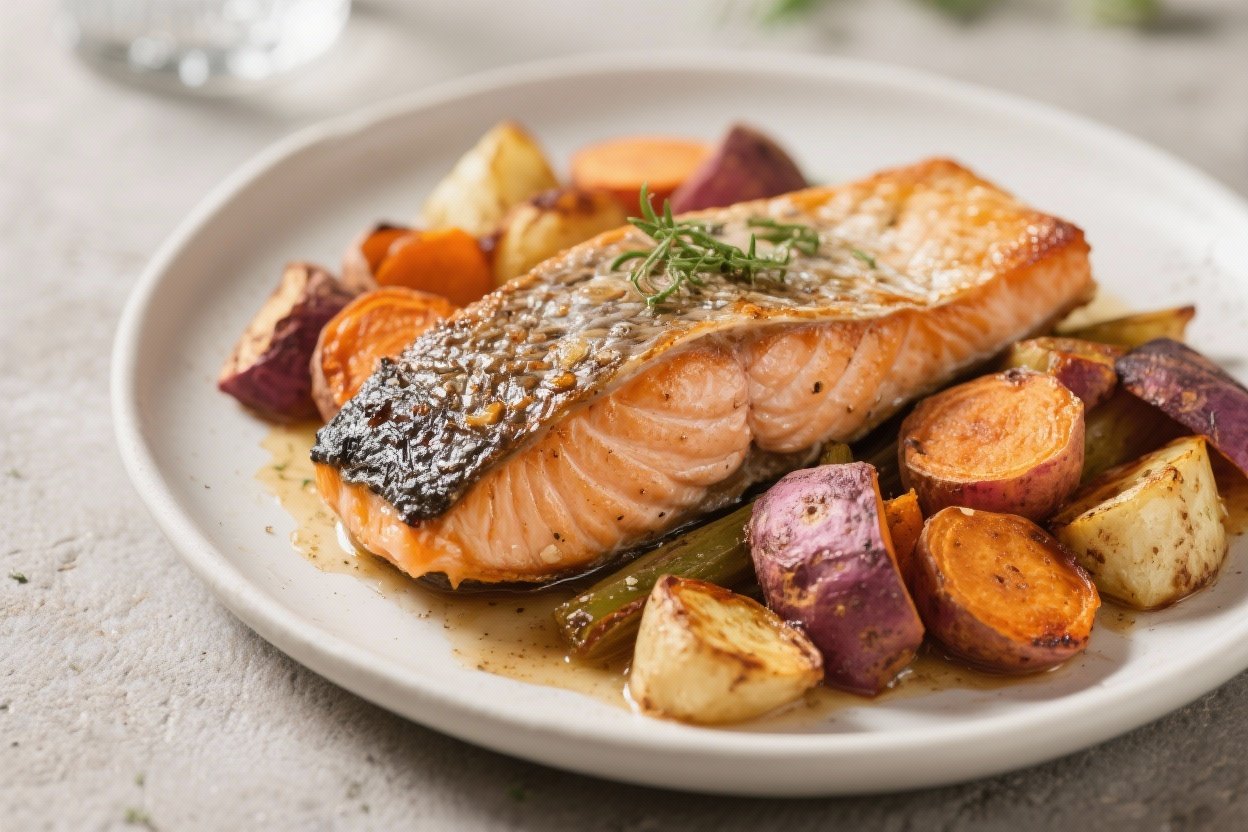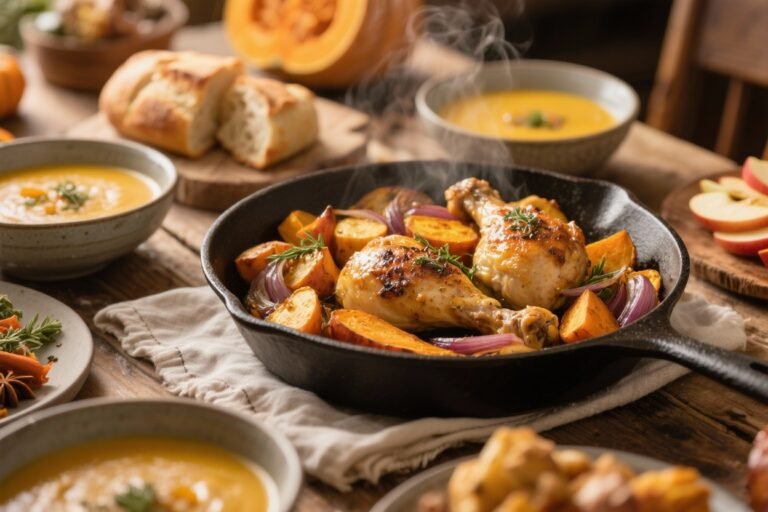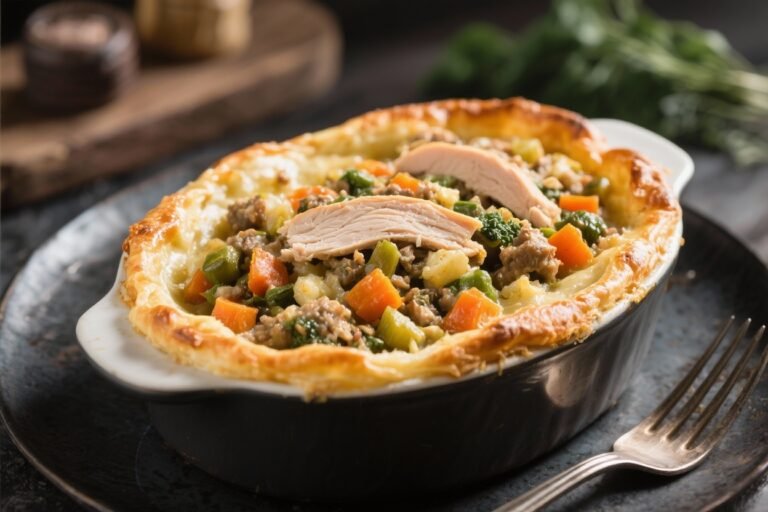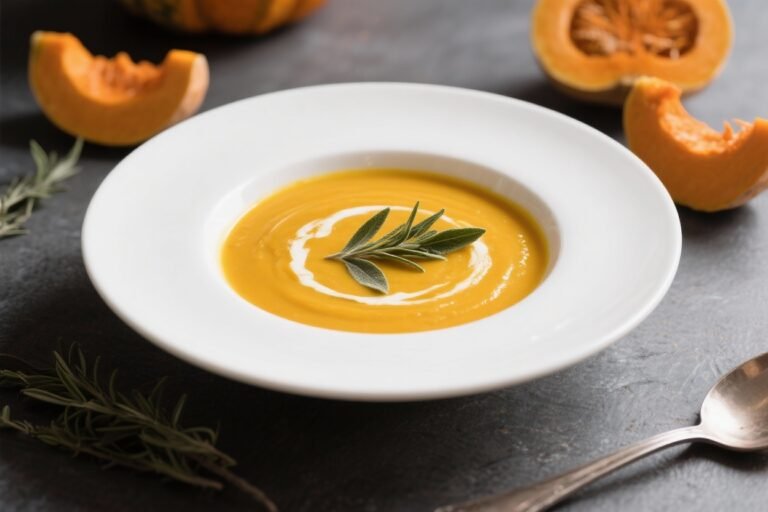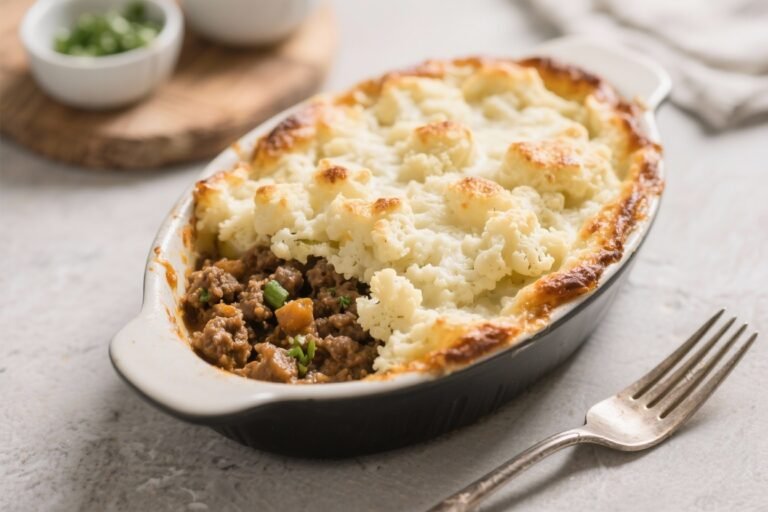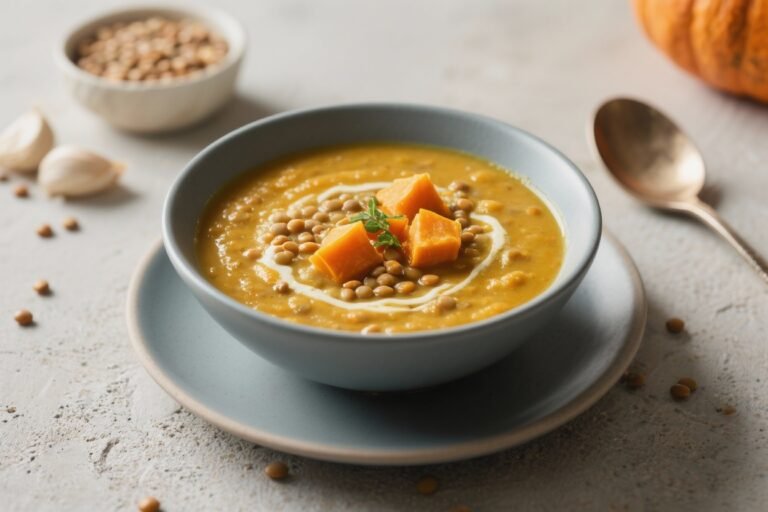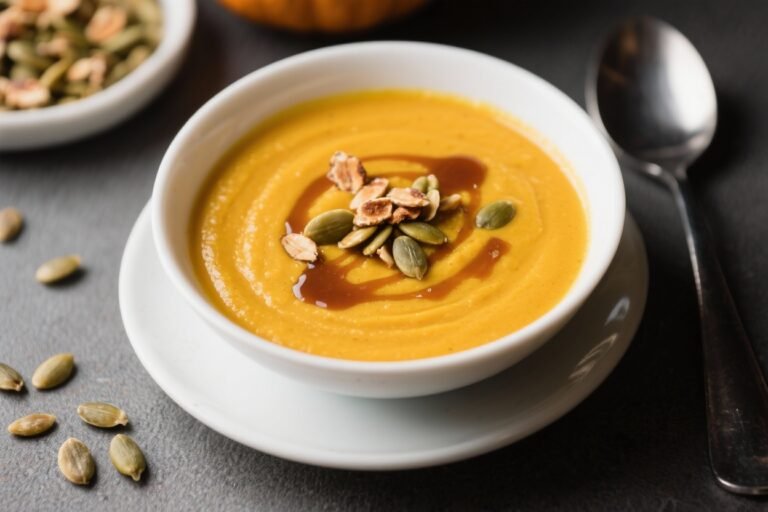Baked Salmon with Roasted Root Vegetables: The 30-Minute Weeknight Flex That Tastes Like a Chef Cooked It
You want a dinner that looks fancy, tastes restaurant-level, and doesn’t wreck your weeknight schedule? This is it. Crispy-edged carrots and potatoes, buttery salmon with a citrus glaze, zero drama.
You’ll get that “I could serve this to guests” confidence without touching a single complicated technique. And the best part: one pan, minimal cleanup, maximum flavor. Your future self will thank you (and your current self will eat very well).
What Makes This Recipe So Good
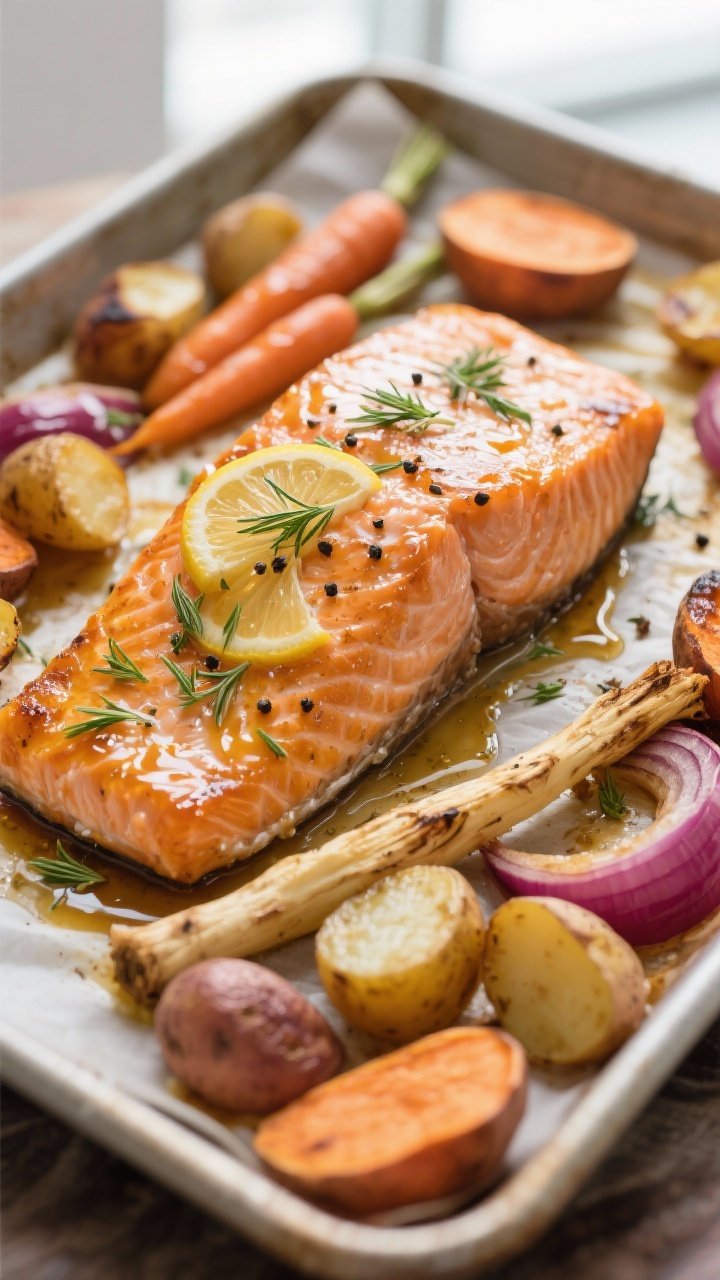
- One-pan wonder: All the action happens on a single sheet pan, so cleanup is a breeze.
- Balanced flavors: Rich salmon, sweet earthiness from roots, bright lemon, and a hint of heat—no boring bites here.
- Foolproof timing: The vegetables start first; salmon joins late so everything finishes together.
No dry fish, no undercooked potatoes.
- Nutrient-dense: Omega-3s, fiber, vitamins—this meal flexes on takeout, IMO.
- Customizable: Swap roots, switch spices, use maple or honey—your kitchen, your rules.
What You’ll Need (Ingredients)
- Salmon: 4 skin-on fillets (5–6 oz each), patted dry
- Root vegetables: 2 medium carrots, 2 parsnips, 1 medium sweet potato, 8–10 baby potatoes (or 2 regular), all cut into 1-inch chunks
- Red onion: 1 small, sliced into wedges
- Olive oil: 3 tablespoons, divided
- Lemon: 1, zested and juiced
- Garlic: 3 cloves, minced
- Honey or maple syrup: 1 tablespoon
- Dijon mustard: 1 teaspoon
- Smoked paprika: 1 teaspoon
- Ground cumin: 1/2 teaspoon
- Red pepper flakes: 1/4 teaspoon (optional)
- Fresh herbs: 2 tablespoons chopped dill or parsley, plus extra for garnish
- Salt and pepper: Kosher salt and freshly cracked black pepper, to taste
- Lemon wedges: For serving
How to Make It – Instructions
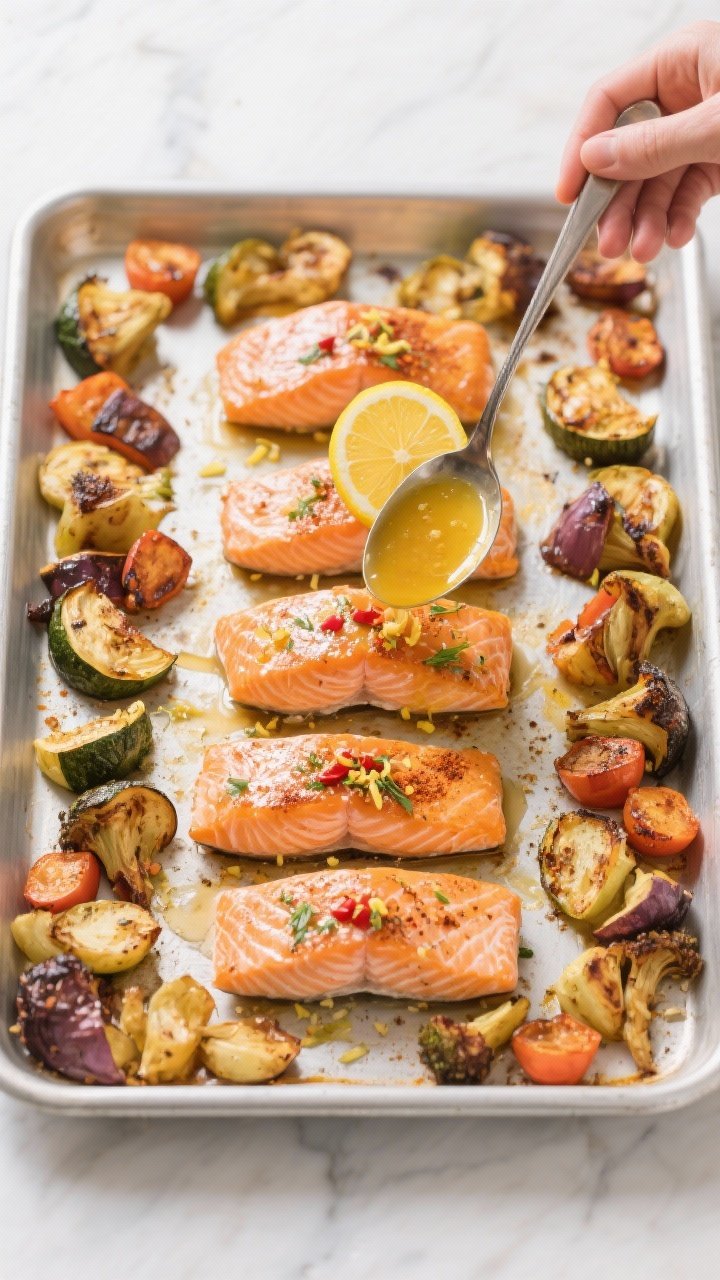
- Preheat and prep the pan: Heat oven to 425°F (220°C). Line a large sheet pan with parchment for easy cleanup.
- Toss the roots: In a bowl, combine carrots, parsnips, sweet potato, baby potatoes, and red onion with 2 tablespoons olive oil, half the lemon zest, 1/2 teaspoon smoked paprika, 1/4 teaspoon cumin, salt, and pepper. Spread in an even layer on the pan.
- Roast the vegetables: Bake for 18–20 minutes, stirring once.
You want them starting to brown but not fully tender yet.
- Make the glaze: Mix remaining 1 tablespoon olive oil with lemon juice, remaining zest, garlic, honey/maple, Dijon, remaining paprika and cumin, red pepper flakes (if using), and chopped dill or parsley. Taste and adjust salt/pepper.
- Season the salmon: Pat salmon dry. Rub with a little salt and pepper.
If the skin is on, leave it—crispy skin > no skin.
- Add salmon to the pan: Push vegetables to the edges and place salmon fillets in the center, skin-side down. Spoon 2/3 of the glaze over the salmon.
- Final roast: Return pan to oven for 8–12 minutes, depending on thickness. Salmon should flake easily and read 125–130°F (52–54°C) in the thickest part for medium.
- Broil for a minute (optional): For extra caramelization, broil 1–2 minutes.
Don’t walk away—sugar burns fast.
- Finish and serve: Drizzle remaining glaze over vegetables and salmon. Shower with fresh herbs and serve with lemon wedges.
How to Store
- Fridge: Store leftovers in an airtight container for up to 2 days. Keep salmon and vegetables in separate compartments if possible.
- Reheat: Warm in a 300°F (150°C) oven for 8–10 minutes, or microwave on low power in short bursts.
Add a squeeze of lemon to refresh.
- Freezer: Salmon can be frozen up to 2 months, but texture is better fresh. Vegetables don’t reheat as well from frozen—expect softer results.
- Meal prep tip: Roast extra vegetables; they’re excellent with eggs, grain bowls, or tossed into salads.
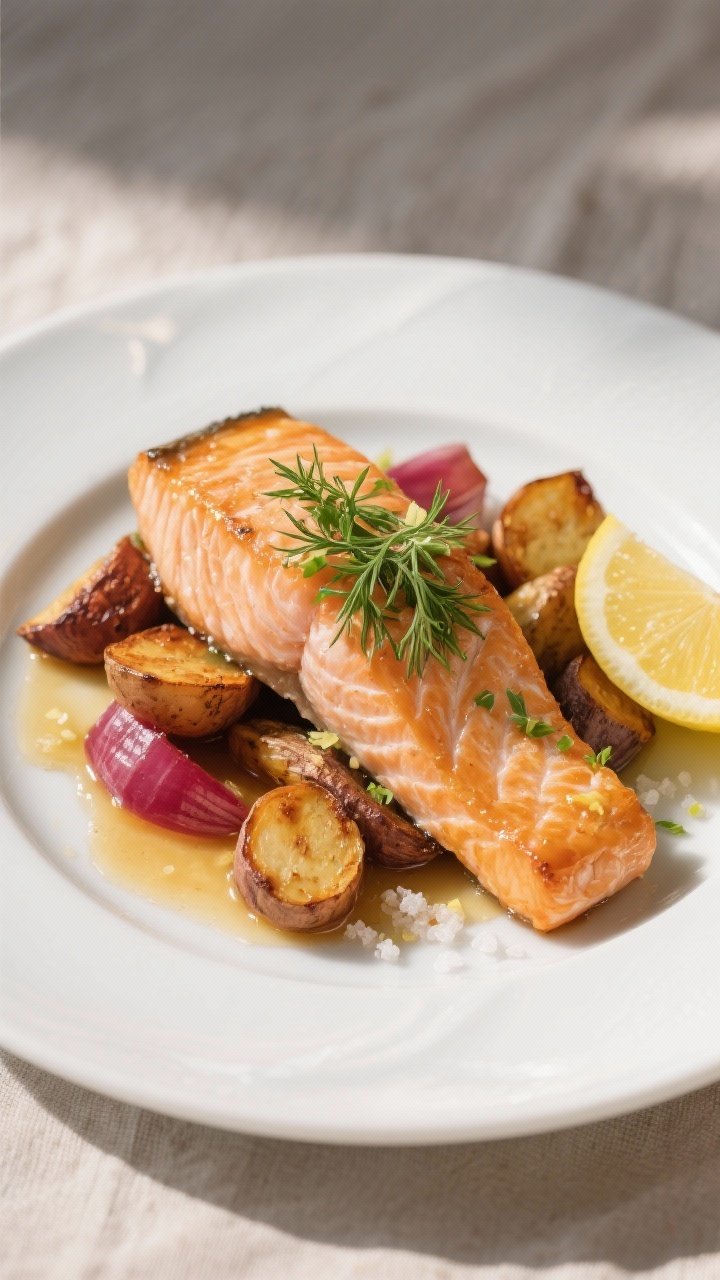
What’s Great About This
- Weeknight-fast, weekend-worthy: You’ll feel like you “did the most,” but you didn’t.
- Texture party: Crispy edges, tender centers, flaky fish, slick glaze—no monotony here.
- Budget-smart luxury: Salmon feels fancy, root veg is affordable. That combo?
Elite.
- Season-proof: Roots are reliable year-round; no hunting for elusive produce.
- Heart-healthy: Omega-3s plus fiber and antioxidants—tastes indulgent, behaves like a salad’s responsible cousin.
Pitfalls to Watch Out For
- Uneven cuts: If your root veg are all different sizes, some will burn while others stay hard. Aim for 1-inch chunks.
- Crowded pan: Overpacking steams instead of roasts. Use a second pan if needed.
- Adding salmon too early: It cooks fast.
Wait until the vegetables have a head start.
- Skipping the pat-dry step: Wet salmon won’t sear or glaze properly. Paper towels are your friend.
- Overcooking: Salmon goes from perfect to chalky quickly. Use a thermometer if you can—worth it, FYI.
Different Ways to Make This
- Spice route: Swap paprika/cumin for za’atar, harissa, or curry powder.
Each changes the vibe without extra effort.
- Citrus twist: Use orange zest/juice instead of lemon for a sweeter, wintery profile.
- Herb-forward: Rosemary and thyme pair beautifully with roots; finish salmon with chives and dill.
- Maple-soy glaze: 1 tablespoon maple, 1 tablespoon low-sodium soy, 1 teaspoon rice vinegar, a pinch of ginger. Big umami energy.
- Extra veg: Add beets (separate section—stains everything), turnips, or rutabaga. If using beets, roast them on a foil corner or a second tray.
- Air fryer assist: Roast veg in the oven; finish salmon in the air fryer at 380°F for 7–9 minutes for crispy edges.
- Grain add-on: Serve over farro, quinoa, or brown rice to make it extra filling.
FAQ
Can I use frozen salmon?
Yes—thaw it overnight in the fridge or under cold running water, then pat very dry.
Frozen fillets can release extra moisture, so drying thoroughly is key for good glaze adhesion.
What other vegetables work besides the ones listed?
Turnips, rutabaga, beets, celery root, and even radishes. Keep sizes similar and consider starting denser roots 5–10 minutes ahead if mixing with quicker-cooking veg.
How do I know when the salmon is done?
It should flake easily with a fork and look slightly translucent in the center. A thermometer reading of 125–130°F is perfect for medium; carryover heat will finish it off.
Skin on or off?
Skin on is ideal—it protects the flesh and crisps up nicely.
If you prefer it off, reduce the cook time by 1–2 minutes and be gentle when transferring.
Can I make this without honey or maple syrup?
Absolutely. Skip it for a drier, more lemon-forward finish, or use a touch of balsamic for sweetness and tang without added sugar.
What wine pairs well with this?
Try a crisp Sauvignon Blanc, dry Riesling, or a light Pinot Noir. They cut through richness and play well with citrus and herbs.
How do I scale this for a crowd?
Use two sheet pans and rotate them halfway through for even browning.
Don’t stack—roasting, not steaming, is the goal.
Is this gluten-free?
Yes, as written. If you swap in soy sauce, choose a gluten-free tamari to keep it GF.
The Bottom Line
Baked Salmon with Roasted Root Vegetables delivers premium flavor with minimal effort—think weeknight speed, date-night payoff. The sheet-pan method keeps things simple, the glaze adds a bright, glossy finish, and the roots bring deep, caramelized comfort.
It’s reliable, flexible, and frankly a little showy. Make it once, and you’ll keep it in the rotation every time you want “wow” without the chaos.
Printable Recipe Card
Want just the essential recipe details without scrolling through the article? Get our printable recipe card with just the ingredients and instructions.
